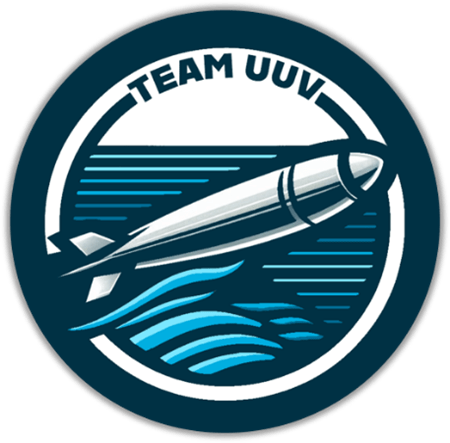Team UUV

| Project name | Team UUV |
| Project Title | Design, Manufacture, and Test of a 3D Printed Metal UUV Housing |
| Abstract | Huntington Ingalls Industries is the largest shipbuilder in America and an all-domain defense provider for more than 30 countries. The HII team enlisted the help of mechanical engineering students from UMass Dartmouth to redesign a section of housing on their REMUS 300 unmanned underwater vehicle (UUV). The original housing is traditionally machined from aluminum billets, but the team explored the options of metal 3D printing instead. With in-depth research, over 20 SOLIDWORKS design iterations, Finite Element Analysis, and testing of the part, the team demonstrated cost, weight, and performance improvements with the new design. By implementing a grid structure along the inside surface of the housing, and optimizing the overall geometry, the team was able to reduce the weight of the part while preserving its structural integrity, achieving its intended underwater depth pressure resistance. While working with the third-party company 3D Systems, the team designed their own additional supports to help with the feasibility of the print. Printed supports are necessary for certain features of the part to prevent deformities in the print. Any feature hanging at more than a 45° angle requires supports, which are usually added by the manufacturer or designed into the part. By integrating custom lightweight supports into the printed part, printing and labor costs were greatly reduced as the team could machine the supports in the machine shop themselves, instead of the company. Machining stock was also added to all surfaces in the design that required a clean surface finish for testing.
After receiving the printed part, the team utilized the school’s machine shop CNC equipment to machine the printed part to its required dimensions and surface finish. The team then used HII’s on-site hyperbaric pressure tank to conduct an external hydrostatic pressure test to test the viability of the new housing design. Two tests were conducted; one being a Factory Acceptance Test (FAT), which is used for common parts within the company, and a Design Verification Test (DVT), which is a more extreme fatigue test used on newly designed parts. Upon the completion of this project, the team’s deliverables to HII included the physical printed prototype, a Critical Design Review, and a final report where the team provided insight on the lessons learned and recommendations for the future design of this 3D printed housing. |
| Faculty advisor | Dr. Vijaya Chalivendra |
| Sponsor | Thomas Waldman |
| Team lead | Natalya Chedid |
| Team Members | Riley Cadogan, Jeremy Chdid, Matthew Gardiner, Tyler Molden |
| Video link | https://youtu.be/OOn6TW1ezME |


